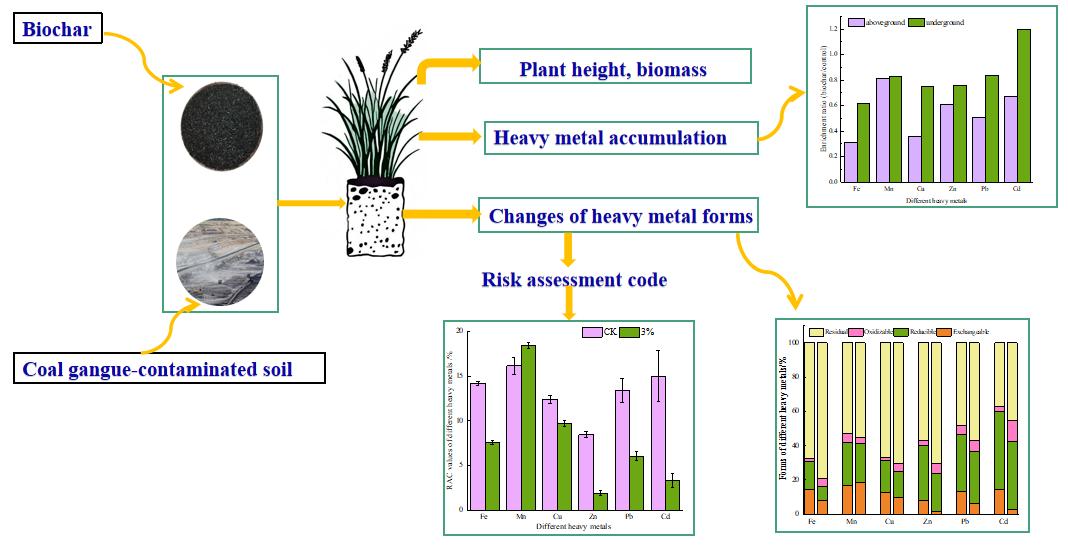
Abstract: Ryegrass was used as a test material to investigate biochar remediatin of heavy metal-contaminated soils in a coal gangue-affected area. Five biochar additions were set: 0%(CK), 1% (B1), 2%(B2), 3%(B3), and 5%(B4). The effects of different treatments on soil physicochemical properties, heavy metal forms, plant biomass, and heavy metal accumulation were analyzed. The soil pH, organic matter content, and plant biomass increased significantly(P<0.05) with increasing biochar addition. The low supplemental level (1%) promoted iron (Fe), manganese (Mn), zinc (Zn), and cadmium (Cd) enrichment in ryegrass roots, while higher supplemental levels (>2%) significantly(P<0.05) inhibited heavy metal migration to plants. the exchangealbe Fe, lead(Pb) , and Cd concentrations in coal gangue-contaminated soil decreased significantly(P<0.05) with increasing biochar addition, while the reducible Mn concentration decreased. The risk assessment revealed that the potential ecological risks of Fe ,Zn, Pb and Cd decreased from moderate to mild when the biochar addition exceeded 2%. In summary, under the test conditions ,biochar additions of >2% effectively reduced the bioavailability of heavy metals in coal gangue-contaminated soil, and inhibited the enrichment and transport of heavy metals by ryegrass through immobilization. Additions of 2-3% biochar should be applied in actural remediation projects.
Total file downloads: 8